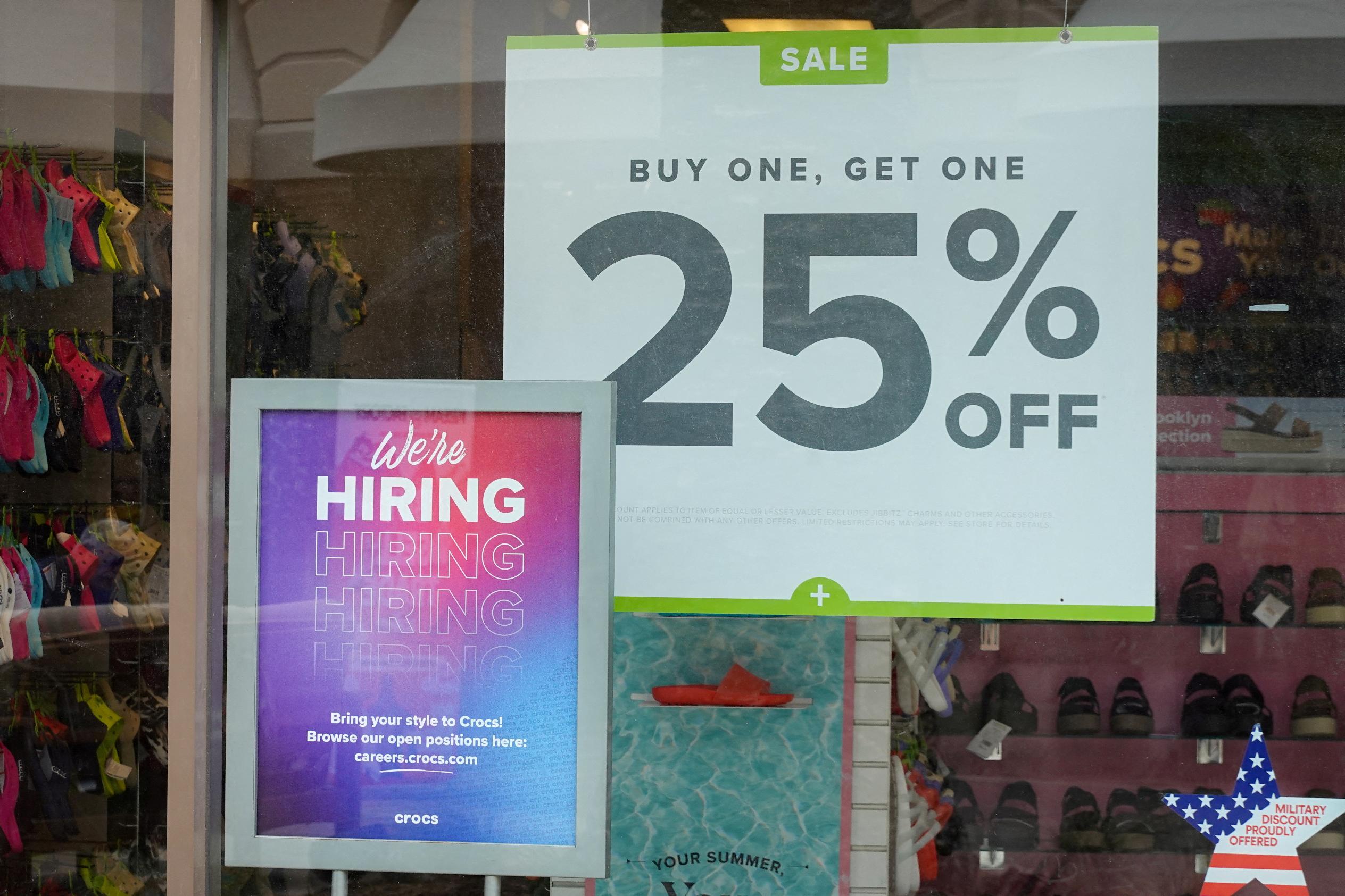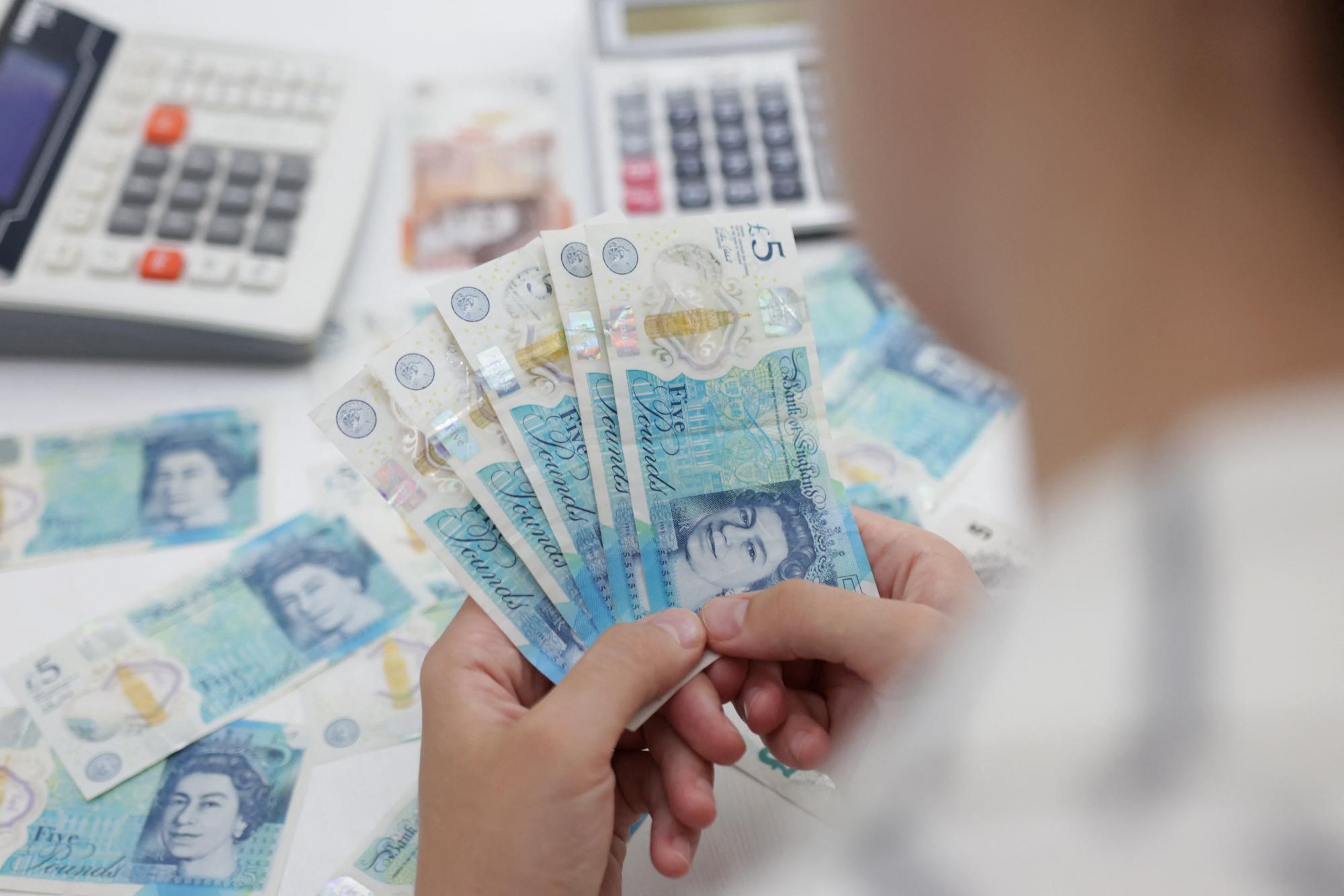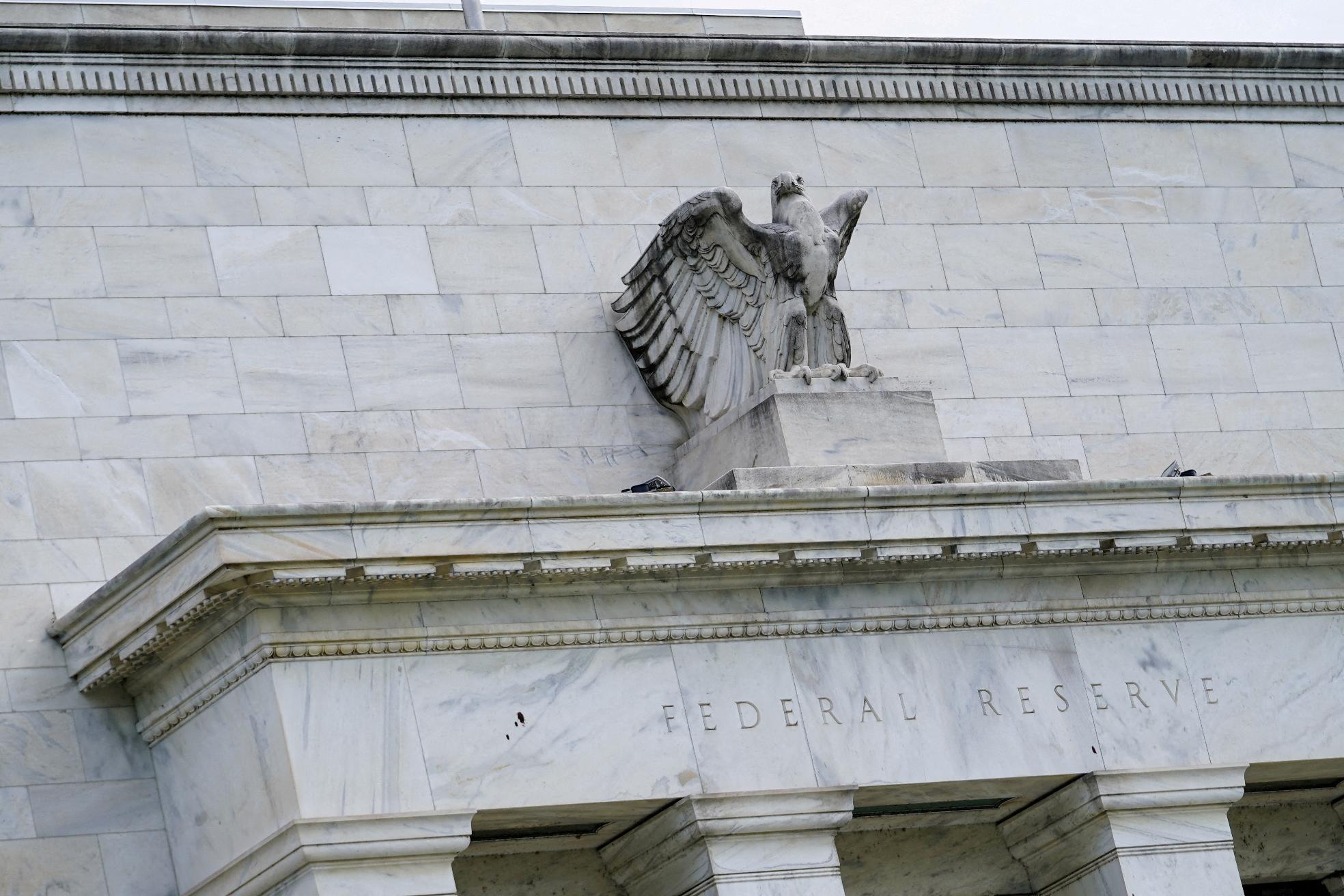
2024-09-06 10:16
MUMBAI, Sept 6 (Reuters) - The Indian rupee ended higher on Friday, tracking gains across regional currencies ahead of the crucial U.S. jobs report that will help investors gauge the extent of a rate cut at the Federal Reserve's meeting this month. The rupee settled at 83.9475 to the U.S. dollar, up from 83.9825 in the previous session. For the week, the rupee fell 0.1%. The Korean won led Asian currencies higher, climbing 0.3% against the dollar. Most other Asian currencies were up at least 0.1%. The dollar index slipped below 101 after disappointing U.S. private payrolls data indicated the labour market was cooling off, fuelling expectations of a weaker jobs report. Economists polled by Reuters expected 160,000 job additions and an unemployment rate at 4.2%. The jobs data, due on Friday, is expected to sway the Fed's decision on whether to cut rates by 25 basis points or 50 bps at their upcoming meeting on Sept. 17-18. If payrolls fall below 100,000 and unemployment creeps higher, the Fed could cut interest rates by 50 bps, resulting in "big losses" for the dollar, ING Bank said in a note. Anything closer to the market consensus and a stable unemployment print would make a 25-bps cut more likely, the bank said. Investors will also be watching out for the U.S. inflation print, due next week. If U.S. inflation is lower than expected in August, it will suggest more pain for the dollar, said Dilip Parmar, a foreign exchange analyst at HDFC Securities. He expects the rupee to consolidate between 83.60 and 84.20 in the near term. Sign up here. https://www.reuters.com/markets/currencies/rupee-gains-broad-dollar-decline-ahead-crucial-us-jobs-report-2024-09-06/

2024-09-06 10:06
Sept. 6 (Reuters) - A look at the day ahead in U.S. and global markets from Mike Dolan Friday looks set to play out like a concentrated version of what markets have been navigating all year - what's the fine balance for the U.S. economy to both dodge recession and allow interest rates to come down at the same time. After a torrent of labor market and business updates all week, the August employment report now acts as the decider, setting the tone for both this month's Federal Reserve meeting and the holy grail of a "soft landing" for the economy. With one exception, advance soundings show a labor market that's indeed slowing. Private sector payroll growth last month came in well below forecast, layoffs are rising and vacancies receding. Only ebbing weekly jobless claims - the most up-to-the-minute readout - suggest otherwise. For stock markets, a big rise in the unemployment rate or swoon in jobs created would inevitably increase fears of recession ahead, just like it did last month, even though that would also likely shift the dial towards a 50 basis point (bp) cut in Fed rates on Sept. 18. The recent re-emergence of a negative correlation between stocks and Treasury bonds may well be reinforced, insulating many mixed asset portfolios, such as 60/40 equity/bond formulations. Nerves in advance have S&P500 stock futures down almost 1% before the bell on Friday as the index heads for its worst week since April. The "fear index", or VIX volatility gauge (.VIX) , opens new tab, nudged back above 22. Rallying treasuries, however, have seen the two-year yield fall to 3.70% for the first time since May last year. Ten-year yields also fell, leaving the 2-to-10 year yield curve on a knife edge and inverted to the tune of just 1 bp. The dollar (.DXY) , opens new tab slipped back to late August levels. If the consensus forecast proves correct of course, it will likely calm the horses. And for the record, markets expect payroll growth to have picked up a notch to 160,000 last month and the unemployment rate to have fallen back a tenth of percentage point to 4.2%. The jobless rate has been in focus ever since it triggered the so-called "Sahm rule" last month on the speed at which a rise in rates suggests recession over the year ahead. Even though the author of the rule - ex-Fed economist Claudia Sahm - downplayed the significance of the trigger this time around, it will remain a red flag unless the rate recedes in August as expected. As to Fed thinking, futures now price the chance of a 50 bp rate cut this month, as opposed to the baked-in quarter-point point move, as just shy of 50%. But there's a hefty 111 bps of easing seen to the end of year and 230 bps over the next 12 months. First to react to the employment report will be two of the Fed's big hitters - Fed Board Governor Christopher Waller and New York Fed President John Williams. And then Fed policymakers head to their traditional blackout period before the next meeting. On Thursday, U.S. Treasury Secretary and former Fed chair Janet Yellen said the U.S. still has a "good healthy labor market" even if the pace of job creation has slowed. The Fed has already clearly signalled its intent to start easing this month and has publicly shifted its focus away from waning inflation to the state of the jobs market, the second of its two mandates. With U.S. crude oil prices back below $70 per barrel and down more than 20% year-on-year, inflation pressures are dissipating further. TECH IN FOCUS In companies, market anxiety also centres on lofty chipmaker stocks and news overnight continued to be unsettling on that score. Broadcom (AVGO.O) , opens new tab forecast fourth-quarter revenue slightly below Wall Street expectations on Thursday, hurt by sluggish spending in its broadband segment. Despite a sharp rise in orders for its artificial intelligence chips, its shares fell more than 7% out of hours. However, Qualcomm (QCOM.O) , opens new tab has explored the possibility of acquiring portions of Intel's (INTC.O) , opens new tab design business to boost the company's product portfolio, according to two sources familiar with the matter. Next on the horizon for the tech sector is Apple's expected release of its latest iPhone as soon as next week, a model expected to include new AI capabilities. In politics, markets are also bracing for the first televised debate next Tuesday between U.S. Republican candidate Donald Trump and his Democratic rival Vice President Kamala Harris. Both candidates this week detailed more economic plans, with Harris indicating a lower capital gains tax proposal than the current administration and Trump positing a corporate tax rate as low as 15%. Around the world, stock markets in Europe and Asia were generally on the backfoot ahead of the payrolls. A big mover in Europe was Raiffeisen Bank (RBIV.VI) , opens new tab, which fell 7% after a Russian court froze the shares of the lender's Russian unit, which the company had planned to spin off. Key developments that should provide more direction to U.S. markets later on Friday: * US August employment report; Canada August employment report * Federal Reserve Board Governor Christopher Waller and New York Fed President John Williams both speak after the payrolls report Sign up here. https://www.reuters.com/markets/us/global-markets-view-usa-pix-2024-09-06/

2024-09-06 09:53
LONDON, Sept 6 (Reuters) - The pound trod water on Friday, ahead of U.S. employment data that could intensify volatility later in the day as investors figure out whether the Federal Reserve will be forced to deliver an outsized rate cut this month or not. Sterling , which is heading for a 0.3% rise against the dollar this week, was trading 0.1% lower on the day at $1.3169. It touched a one-week high of $1.31925 earlier in the day. The euro was up 0.1% against the pound at 84.35 pence, while the yen - a major beneficiary this week of safe-haven flows - strengthened, leaving sterling down 0.5% on the day at 187.90 yen . Economists surveyed by Reuters expect 160,000 workers were added to U.S. nonfarm payrolls in August, after July's 114,000 increase. It was this report which ignited concern that the U.S. economy is slowing rapidly, which prompted a major selloff in risk assets in early August. Futures show traders are pricing in as many as 100 basis points in Fed rate cuts over the remainder of this year, compared with less than 45 bps from the Bank of England . This anticipated gap has helped fuel a rally in recent weeks in sterling at the expense of the dollar. Currency market action on Friday was firmly dictated by the dollar ahead of the payrolls numbers. "The dollar is weak as we lead up to today’s report and it is lower vs. all other G10 FX currencies since the most recent bout of risk aversion, which did not boost the dollar as a safe haven. This suggests that when the market’s fears are centred around the weak outlook for the U.S. economy, the dollar tends to struggle," XTB research director Kathleen Brooks said. Next week brings more UK-specific catalysts for sterling, including a monthly report on British employment that contains data on wage growth - a key focus for the Bank of England, which has expressed concern about persistent inflation in pockets of the economy, such as services and salaries. Speculators are sitting on a fairly sizeable bullish position in sterling futures, worth $7.45 billion, according to weekly data from the U.S. markets regulator . That's only narrowly below July's record of $11.468 billion, meaning that any data that undermines the argument for the BoE to keep UK rates higher for longer could trigger a selloff in the pound. Sign up here. https://www.reuters.com/markets/currencies/sterling-holds-pre-payrolls-inertia-grips-markets-2024-09-06/

2024-09-06 08:59
LONDON, Sept 6 (Reuters) - Investors poured $61 billion into cash-like money market funds in the week to Wednesday, as they braced for the Federal Reserve to cut interest rates for the first time in four years, Bank of America said on Friday. WHY IT’S IMPORTANT Many investment fund managers have hoped rate cuts will lower the returns on money-market funds (MMFs) and send a torrent of cash into stocks and bonds. But, somewhat counter-intuitively, big investors tend to move into MMF as the range of short-term fixed income assets they hold typically offer higher returns for longer than short-term Treasury bills, whose yields are highly sensitive to Fed rates. BY THE NUMBERS Investors put $60.8 billion into cash funds in the week to Wednesday, adding to the largest five-week inflow into cash since December 2023 at $231 billion, BofA said in its weekly Flow Show report, citing EPFR data. They put $9.5 billion into bonds, although U.S. Treasuries suffered the largest outflow since January, at $1.9 billion. Investors put $3 billion into stock funds and $600 million into gold. CONTEXT U.S. economic data has suggested the labour market is cooling, with job openings falling and payroll growth slowing, putting the Fed on track to cut rates at its meeting on Sept. 18. U.S. interest rates are currently in a 5.25% to 5.5% range, leaving yields on money market funds at their highest since before the financial crisis in 2008. A touch over $6.3 trillion currently sits in U.S. money market funds, up from $3.6 trillion at the start of the pandemic, Investment Company Institute data shows . WHAT’S NEXT Investors will be scrutinising U.S. economic data, particularly Friday's August employment report, for clues about whether the Fed will cut 25 or 50 basis points this month. Bad economic news could lead to a rush into safe-haven government bonds. GRAPHIC Sign up here. https://www.reuters.com/markets/global-markets-flows-bofa-2024-09-06/

2024-09-06 07:51
Sept 6 (Reuters) - The volatile activity that has marked September so far may not let up any time soon, as investors are on edge ahead of more key macro events that could shape the tone for trading in the weeks ahead. Here's your look at the week ahead for markets from Kevin Buckland in Tokyo, Ira Iosebashvili in New York, Yoruk Bahceli in Amsterdam and Naomi Rovnick and Amanda Cooper in London. 1/PRICE IS RIGHT? Investors’ focus may have shifted to U.S. employment and economic growth, but the upcoming consumer price data - due on Sept. 11 - could still cause a stir. The markets are still gaming out how much the Federal Reserve will need to cut rates at its Sept. 17-18 meeting, heightening the importance of every data report. Evidence that inflation remains relatively robust could argue against a 50-basis point rate cut - currently seen as a less likely scenario than the Fed reducing rates by just 25 basis points. A sharp drop in consumer prices, on the other hand, could be interpreted as a sign economic growth has begun to slow more than expected, tipping the scales towards a jumbo cut. Economists polled by Reuters expect inflation to have risen by 0.2% in August, matching the rise the previous month. 2/ECB'S NEXT MOVE The European Central Bank is all but certain to deliver its second rate cut this cycle, so what matters more is any clues on what's next. Traders now fully price another cut after September and close to a 50% chance of an additional move this year. In mid-July, they saw less than a full chance of a post-September cut. With a December move seen as likely, investors are eager to hear whether an October cut is a possibility too. Once bitten twice shy, ECB policymakers are wary of making any promises. Some hawks are still declining to commit to September. They are at odds with doves over whether a weak growth outlook is enough to put inflation worries to rest. Inflation fell to just above the ECB's target at 2.2% in August, but sticky services and core measures mean some policymakers want more evidence that 2% is in reach before going all-out. 3/BLACK GOLD Investors are struggling to decide if the bond or stock market is right about the economy. Bonds point to oncoming recession, while stocks - this most recent selloff notwithstanding - have vaulted to yet more record highs, reflecting a sense of confidence in a benign landing. The problem is, only one can be right. Enter the gold/oil ratio. This metric, which reflects how many barrels of crude it takes to buy one ounce of gold, is at its highest since 2020. The ratio drops when confidence in the economy increases, as it assumes energy demand will improve, and rises when concern about growth and recession - and therefore the prospect of gold-friendly rate cuts - sets in. Gold is trading close to record highs around $2,500 an ounce, while oil is struggling to stay above $70 a barrel. Once again, only one can be right. 4/STERLING JOBS The Bank of England was quicker than its peers to raise interest rates in 2021 and is expected to cut them more slowly, unless important data such as the Sept. 10 monthly wages report proves reassuring. When the BoE implemented its first rate cut of this cycle on Aug. 1, in a move traders do not expect to happen again until November, it said it would closely watch pay growth, a major inflation factor. UK wages rose at their slowest in nearly two years in the quarter to June 30, but unemployment dropped unexpectedly and the working population rose by significantly more than forecast. A soft jobs report could benefit borrowers, but weaken the pound, which has boomed on bets the BoE will keep rates relatively high. Bullish positions in sterling are mostly held by debt-funded speculators, who are motivated to sell at signs of trouble rather than risk margin calls. 5/PICKING A PREMIER Japan's next prime minister will take over the push for better corporate governance that propelled stocks to record highs this year, support for the Bank of Japan's tightening campaign after decades of deflation, and responsibility for an ever-expanding debt pile that is by far the biggest in the industrialized world. Incumbent Fumio Kishida is stepping down over a slush-fund scandal. The field of hopefuls to replace him could reach around 10 by the time campaigning starts on Sept. 12, ahead of a party vote on Sept. 27. Shinjiro Koizumi, the son of a former prime minister, is a fan of deregulation, while perennial runner-up Shigeru Ishiba pushed for policy normalisation before the BOJ's controversial rate hike last month and Sanae Takaichi, the frontrunner among female candidates, is a reflationist. The BOJ is independent, but the government can exert pressure. With the central bank's next meeting one week before the ruling party's vote, timing is tricky. Sign up here. https://www.reuters.com/business/take-five/global-markets-themes-graphic-2024-09-06/

2024-09-06 07:35
TOKYO, Sept 6 (Reuters) - The Japanese government on Friday agreed to take several steps to secure local consent for restarting Tokyo Electric Power's (Tepco) (9501.T) , opens new tab Kashiwazaki-Kariwa nuclear power plant, including reinforcing evacuation measures in the area. Tepco has been eager to bring the world's largest nuclear power plant by generation capacity back online to slash operating costs, but still requires local consent. Last December, the national nuclear regulator lifted an operational ban imposed in 2021 on the Kashiwazaki-Kariwa plant in northern Japan due to safety breaches, allowing Tepco to work towards gaining local permission to restart. On Friday, several ministers including the industry and land ministers held a meeting and agreed to establish a new framework aimed at helping bringing the plant back online, the government officials told reporters. The new framework will involve the industry and land ministries and the Cabinet Office working with Niigata Prefecture, where the plant is located, to discuss the details of measures and how to implement them. In addition to enhancing evacuation routes for residents in the event of a nuclear disaster, the government will also intensify snow removal systems and develop radiation-proof facilities for residents, the officials said, citing that those measures reflected requests from the Niigata Prefecture's governor. The government will also launch a publicity campaign across several media to inform residents about the importance of the plant to electricity supply, they added. It will also supervise Tepco's setting up of a framework to strengthen governance of the plant, potentially involving foreign experts and other utilities, the ministers said. "The Government's policy is to proceed with restarting reactors that comply with the new regulatory standards, while gaining local understanding," said Shusaku Kichise, director of nuclear energy policy planning division at the Ministry of Economy, Trade and Industry. Tepco needs consent from the prefecture's governor to resume operations. In March, the governor said that more talks were needed over the possible restart of the plant. Japan has been able to restart only 12 reactors since 2011, with many operators still going through a re-licensing process to comply with stricter safety standards imposed after the 2011 Fukushima disaster. Sign up here. https://www.reuters.com/business/energy/japan-government-agrees-measures-help-restart-tepcos-nuclear-reactor-2024-09-06/
